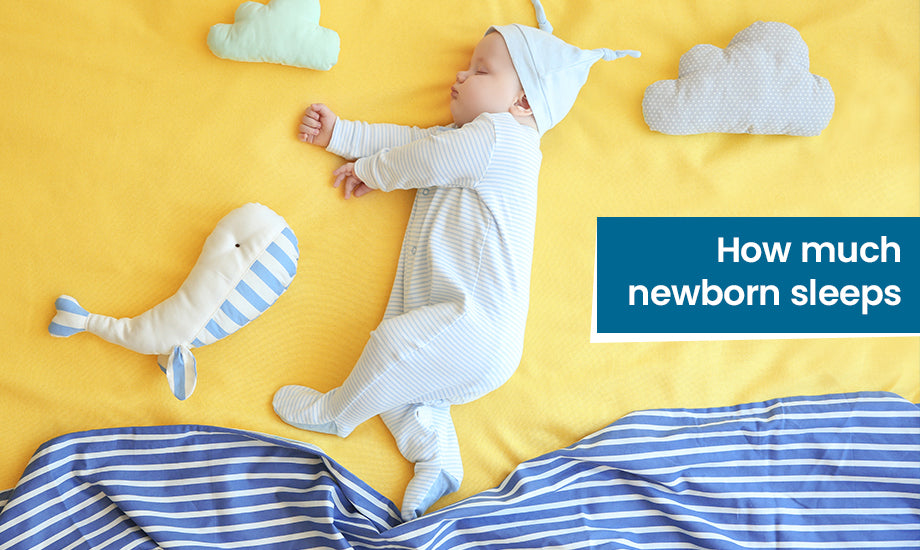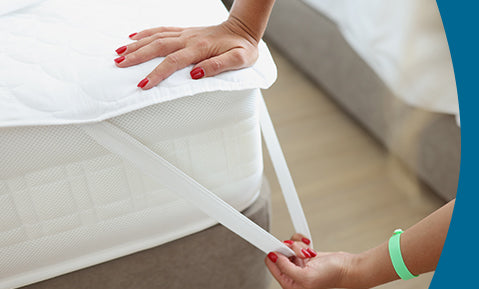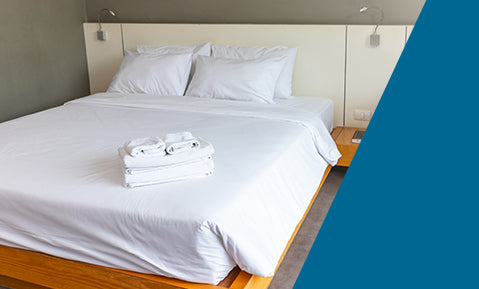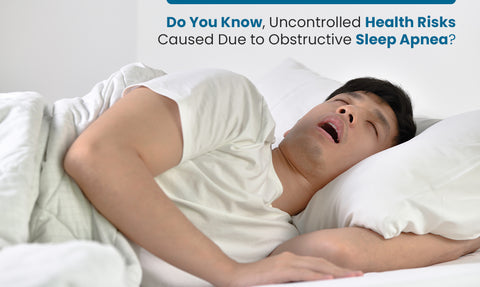
Firstly, congratulations to you for your little one. Excited! Definitely you are but, be ready for a lot of sleep deprivation in the initial months.
Sleep is not only a state of rest but also involves intense activity of the brain. It is important to know the sleeping patterns of the newborn not only because it affects their physical and mental growth but it equally impacts the sleeping schedule of the parents. A newborn’s sleep is different from the way an adult sleep. The sleep of an adult follows the typical rhythm of day and night (circadian rhythm). Such patterns do not apply for newborn babies which make it difficult to manage their sleeping time.
Worried if your child is sleeping sufficiently or sleeping too much? Maintain a log book. The following information will guide you through the sleep of a newborn till 2 years of age.
Sleeping needs of a newborn
The sleeping time and need varies with age. Sleep of an infant differs markedly from older children and adults. Newborns and infants spend most of their time sleeping and feeding. A newborn sleep for nearly 16 hours out of which 8 to 9 hours is nighttime sleep and nearly 8 hours is daytime sleep. They wake up to feed after every 3 hours and then go back to sleep. By the time the baby becomes 6 months old, daily sleep requirement gradually decreases to 13-14 hours. By 3-6 months of age, the brain matures and the baby develops a regularized sleep pattern. As the baby gets older, the nighttime sleep increases. Nearly 90% of babies sleep whole night by 6 months of age. The sleep of babies over six months can be affected by separation anxiety and crawling. Let us have a quick look at the sleeping patterns at the different time points:
- Newborn- 16 hours ( 8-9 hours nighttime sleep and 8 hours daytime sleep)
- 6 months – 14 hours ( 10 hours night time sleep and 4 hours daytime sleep)
- 1 year - 14 hours ( 11 hours nighttime sleep and 3 hours daytime sleep)
- 2 years - 13 hours ( 11 hours of night time sleep and 2 hours of daytime sleep)
In case you are someone who would want to do some scientific research and dig deeper, let us talk about the terminologies. The sleep of an infant can be classified as REM/NREM ( Rapid eye movement/ non rapid eye movement) sleep only after 2 months. Before that REM sleep is called active sleep (AS) and NREM sleep is called quite sleep (QS) and the final stage is called indeterminate sleep(IS).
How does the sleep pattern change with time?
The sleeping need of babies vary. A baby may need more or less sleep than other babies of the same age. Let us have a look at the sleep patterns till 1 year of age.
As the newborn grows
- Daytime sleep decreases
- The baby is awake for a longer duration
- The baby wakes up less during night time sleep
At 2-3 months:
- A sleep pattern starts to form
- Nighttime sleep increases
At around 3 months:
- The sleep can be divided into- light sleep, deep sleep and dream sleep
- Sleeps cycle lasts for a longer duration
- Nighttime sleep increases
At 3-6 months
- The sleep pattern changes to 2-3 hours of sleep during the day
- Night time sleep gets longer but the baby wakes up atleast one time at night.
6-12 months
- The sleep cycle is nearly like grown ups i.e the baby wakes up less at night.
- Each day time nap lasts for about 30 minutes to 2 hours.
- If something happens that the baby finds interesting, he/she keeps himself/herself awake
- As baby starts crawling, there may be simultaneous settling difficulties . The sleep habits change.
- The baby may face separation anxiety i.e the baby may get upset if he/she cannot see you. The baby may not want to sleep or may up more at night. However, they slowly overcome this anxiety or worry.
How to know if the baby is tired and needs sleep?
Contrary to what you may believe, it is more difficult to put an overtired baby to sleep. Overtired babies also have problem staying asleep which means they will get up more. So it is better if you recognize the signs of tiredness and put your baby to sleep when the baby:
- Yawns
- Rubs eyes
- Fusses
- Looks away from you
How to help a baby to fall asleep?
- Set a sleep pattern for your baby: Since the baby turns 2 weeks, tech them night is sleep time and day is fun time. During the day play with your baby, try to keep them active. Try keeping them awake even after feeding but don’t worry if the baby starts sleeping. During night keep the room semi darkened during feeding. Turn off all stimulations like loud noise or bright lights. Slowly they will learn what you are trying to teach: day is fun time and night is sleeping time.
Other things that will help:
- Let the baby nap as per age
- Create a routine at bedtime like rocking, reading books etc
- When you find your baby is sleepy, play a soft music
- Have an object that your baby takes to bed but ensure your baby is old enough so that the object wont cause any risk of suffocation
- Put your baby to bed when he/she is drowsy
- Be consistent
- Comfort and reassure your baby when he/she is afraid
- Comfort and soothe the baby without taking him/her out of bed when the baby wakes up at night.
- Reassure the baby when he/she cries by patting etc, then leave. Repeat if needed.
- Eating should be separated from sleeping: after the baby turns 1 month old, if they sleep and don’t wake up when you are feeding, stop and let them sleep by putting them on the bed.
Never give your baby a feeding bottle when you try to make them sleep. it may lead to ear infections, choking and cavities.
- After 2 months of age, don’t wake up the baby at night for feeding: let the baby find a sleep schedule. If they are gaining weight properly, don’t wake them up at nighttime to feed them. If they are eating properly in the daytime, they needn’t wake up to eat at night.
Be patient with your baby. Have realistic expectations. If in any doubt, you may take the advise of a child specialist (pediatrician).
How to recognize if the newborn is over sleeping?
A baby sleeps longer than usual mostly when they have feeding difficulty or are ill. The reasons for which a healthy baby oversleeps are:
- During growth spurts
- Any medical condition ( in rare cases)
- Jaundice
- If the baby is not well fed
- Minor illnesses
- Serious infection even though the baby does not show the symptoms like older babies ( in rare cases)
Signs that the baby is not being fed sufficiently:
- Unresponsive and lethargic baby
- The baby did not retain the birth weight even after they turn 14 days old
- The baby is not calmer after being fed
- The baby constantly gains less weight (lesser than 4-6 ounce/ 7 days) when they are aged more than 6 weeks.
- When the baby needs less than 4 diapers each day
What to do if the newborn is oversleeping?
Usually if you newborn seem to oversleep, its just because the baby is having an irregular sleeping schedule. However, it may be because of health issues too which could be dangerous. So consult a pediatrician.
Before consulting a child specialist , you may try these small tips:
- Look for signs that your child is hungry
- Try to feed your baby breast milk or give them a milk bottle after every 1-2 hours
- Make sure the baby is not too hot or too cold
- Keep a log book for keep a record of sleep.
When to consult a doctor: Oversleeping may be due to respiratory problems.
In case of any doubt, don’t wait, consult a child specialist immediately. Look for signs like
- If the baby is wheezing of gasping for air
- Loud breathing
- Flaring of nostrils during breathing
- During breathing if the skin over and around the ribs sink
- Fever
- The baby have eaten, inhaled or touched a toxic substance
Signs of sleeping problems of an infant
This is often normal and occurs at around 6 months of age. This may happen due to separation anxiety as the baby does not understand that the separation is not permanent. This may also happen when they may be overtired or overstimulated. Common signs are:
- Waking up more times at night
- Crying when the parent leaves
- Refusing to sleep without parent
- Clinging when the parent separates
Sleeping issues may also happen due to illness. Consult a child specialist if there is any concern.
“HEADSHAPING PILLOWS ARE NOT NOT SAFE.
Yes, u heard it right. According to the The U.S Food and Drug Administration (FDA) head shaping pillows should not be used to change the symmetry and head shape of an infant. THE HEAD SHAPING PILLOWS ARE NOT APPROVED BY FDA. Furthermore, according to the American Academy of Pediatrics pillows should not be used till the baby turns 2 years old. Babies from 2-12 months should be kept on a firm mattress. Pillows or any other items lead to an unsafe environment and should not be used as it increases the risk of suffocation and death.
What are head shaping pillows?
Head shaping pillows have a center hole that are used to prevent “ flat head syndrome” ( deformational plagiocephaly/ positional plagiocephaly)
Why is a head shaping pillow not required?
The Children’s National states that positional ‘plagiocephaly’ is not a serious problem. ‘Craniosynostosis’ is seious where there is joining of the skull bones and the pillows are not effective in this condition. Moreover, enough evidence does not exist on the proposed benefit of head shaping pillows. Flat heads are mostly caused by ‘ infant torticolis’ i.e tight neck muscles.
Safer ways to prevent and treat plagiocephaly:
- While the baby is sleeping on back , change their head position from right to left and vice versa
- Lessen the time babies sleep on their back by often picking up the baby
- Make the baby lie on stomach for atleast sometime when they are awake and encourage them to move their head using toys or taking to the baby.
Recommendations for parents.
- Infant head shaping pillows can lead to sudden unexpected infant death (SUID) and sudden infant death syndrome (SIDS), suffocation and death.
- IT DOESNOT PREVENT FLAT HEAD SYNDROME OR ANY MEDICAL CONDITION
- The flat head syndrome goes away by itself as the infant ages.
- If the shape of the head of an infant is not proper, consult a child specialist for management.
- According to the American Academy of Pediatrics (AAP) and National Institute of Heath (NIH), infants should be made to sleep on flat surfaces or crib on their backs without any pillow, soft objects, soft toys or loose bedding.
What pillows can be used after the baby turns 2 years old?
Pillows that support the neck of the toddler should be used. Using a firm and small pillow is the best for toddlers.
Proper sleep is an absolute necessity both for babies and adults. It is better to educate oneself about the sleeping patterns and requirements of the baby not only for the better health of your baby but also for your health, till your baby grows up.












